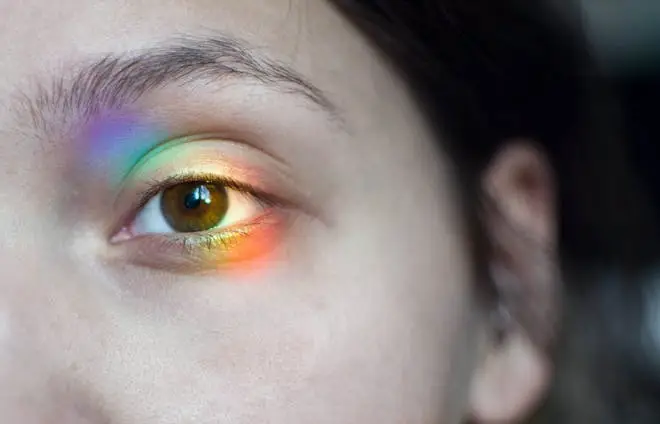Keratoconus is a progressive eye condition that affects thousands of adults across the United Kingdom, causing the cornea to gradually thin and bulge into an irregular cone shape. This structural change leads to significant visual impairment, including blurred vision, increased sensitivity to light, and difficulties with night vision. For many years, patients with keratoconus had limited treatment options, often requiring increasingly strong spectacle corrections or hard contact lenses until, in severe cases, corneal transplantation became necessary.
Corneal cross-linking has emerged as a revolutionary treatment that can halt the progression of keratoconus, preserving vision and potentially eliminating the need for more invasive procedures. This minimally invasive procedure strengthens the corneal tissue through a combination of riboflavin (vitamin B2) eye drops and controlled ultraviolet light exposure, creating new bonds between collagen fibres and stabilising the cornea’s structure.

Understanding Keratoconus: The Silent Progression
What Is Keratoconus?
Keratoconus is a non-inflammatory eye condition where the normally round, dome-shaped cornea gradually becomes thinner and develops a cone-like bulge1. The cornea, which is the clear front surface of the eye responsible for focusing light, loses its natural shape and strength due to weakened collagen fibres. This irregular corneal surface causes light to scatter rather than focus properly on the retina, resulting in distorted vision.
UK Prevalence and Demographics
In the United Kingdom, keratoconus affects approximately 1 in 1,500 people, though the incidence can be as high as 1 in 450 in certain populations3. Research indicates that the condition is more prevalent among individuals of South Asian, Middle Eastern, and North African descent, with UK studies showing prevalence rates 4.4 to 7.5 times higher in Asian populations compared to white Caucasians. The condition typically manifests during adolescence or early adulthood, with most diagnoses occurring between the ages of 10 and 30.
The Progressive Nature of Keratoconus
Keratoconus is characterised by its progressive nature, particularly in younger patients. Research shows that younger individuals and those with steeper corneal measurements face a significantly higher risk of progression. Studies indicate that each year younger in age is associated with a 4% greater risk of corneal steepening, while every 1 dioptre increase in baseline corneal steepness correlates with a 7% higher risk of vision deterioration.
Without intervention, keratoconus typically follows a relapsing-remitting pattern, with periods of stability interspersed with phases of progression. The condition tends to progress more rapidly in younger patients, with the rate of change generally slowing as individuals reach their 30s and 40s due to natural age-related corneal stiffening.
The Science Behind Corneal Cross-Linking
How Corneal Cross-Linking Works
Corneal cross-linking uses a photochemical process to strengthen corneal tissue by creating new bonds between collagen fibres. The procedure involves two key components: riboflavin (vitamin B2) and ultraviolet-A (UVA) light. When riboflavin is exposed to UVA light, it acts as a photosensitiser, initiating a chemical reaction that forms additional cross-links between collagen fibrils in the corneal stroma.
This process mimics the natural age-related stiffening of the cornea, which explains why keratoconus progression typically slows with age. The newly formed cross-links cause the collagen fibres to shorten and thicken, resulting in a stiffer, more stable corneal structure.
The Standard Dresden Protocol
The original corneal cross-linking procedure, known as the Dresden protocol, involves several key steps:
- Anaesthesia: Topical anaesthetic drops are applied to numb the eye
- Epithelial removal: The central 8-10mm of the corneal epithelium is gently removed
- Riboflavin application: 0.1% riboflavin solution is applied to the corneal surface for 30 minutes
- UV light exposure: The cornea is exposed to 370nm UVA light at 3mW/cm² for 30 minutes
- Post-treatment care: Antibiotic drops and a protective contact lens are applied
Accelerated Cross-Linking Protocols
Modern variations of the procedure include accelerated cross-linking protocols that reduce treatment time whilst maintaining effectiveness. These protocols use higher UV light intensities for shorter durations, with some procedures taking as little as 20 minutes. The principle follows the Bunsen-Roscoe law of reciprocity, where the biological effect depends on the total energy dose rather than the specific combination of intensity and time.
Treatment Techniques: Epithelium-Off vs Epithelium-On
Epithelium-Off Cross-Linking
The traditional epithelium-off approach involves removing the corneal epithelium to allow better penetration of riboflavin into the corneal stroma. This method has been extensively studied and demonstrates superior riboflavin absorption and deeper treatment penetration. However, it is associated with post-operative discomfort during epithelial healing and carries a slightly higher risk of complications.
Epithelium-On Cross-Linking
The epithelium-on (transepithelial) approach preserves the corneal epithelium, reducing post-operative discomfort and infection risk. Various techniques enhance riboflavin penetration through the intact epithelium, including chemical permeation enhancers and iontophoresis. Recent studies suggest that epithelium-on cross-linking can achieve comparable efficacy to the traditional method whilst offering improved comfort and reduced complications.
Effectiveness and Success Rates
Clinical Outcomes
Corneal cross-linking demonstrates impressive success rates in halting keratoconus progression. NHS data indicates that the treatment is successful in more than 90% of cases. A comprehensive survey of UK cross-linking centres reported success rates of 85-95% in achieving long-term stabilisation. Even in high-risk paediatric populations, where keratoconus tends to be more aggressive, cross-linking achieves stabilisation in approximately 82% of cases.
Long-Term Stability
Research demonstrates that corneal cross-linking provides sustained stabilisation over extended periods. The KERALINK randomised controlled trial, involving young patients aged 10-16 years, showed that cross-linking significantly reduced keratoconus progression at 18 months compared to standard care. Only 7% of patients who received cross-linking showed progression compared to 43% in the control group.
Retreatment Rates
Scientific literature reports retreatment rates between 8-14% over a 15-year period following initial cross-linking. The procedure is repeatable if keratoconus continues to progress, with repeat cross-linking showing similar safety and efficacy profiles to primary treatment.
Candidate Selection and Eligibility
Ideal Candidates
The most suitable candidates for corneal cross-linking are individuals with documented progressive keratoconus. Evidence of progression typically includes:
- Measured increase in maximum corneal steepness of at least 1.00 dioptre over a 2-year period
- Change in myopia or astigmatism of 1 dioptre or more within 1 year
- Central corneal thickness decrease of 5% or more over 1 year
Age Considerations
While patients of virtually any age can be considered for cross-linking, younger individuals typically benefit most from the procedure. The treatment is particularly valuable for patients under 30 years of age, as they face the highest risk of rapid progression. However, recent research has documented successful treatment in patients as old as 54 years, challenging the previous assumption that keratoconus progression ceases after age 40.
Corneal Thickness Requirements
Adequate corneal thickness is essential for safe cross-linking. Traditionally, a minimum corneal thickness of 400 microns has been required to prevent endothelial damage. However, advanced protocols now allow treatment of thinner corneas using modified techniques and hypoosmolar riboflavin solutions.
Contraindications
Patients are generally not suitable for cross-linking if they have:
- Corneal thickness less than 400 microns (unless using specialised protocols)
- Previous corneal transplantation
- Severe corneal scarring
- Active ocular infection
- Pregnancy or breastfeeding
The Treatment Process
Pre-Treatment Assessment
Before undergoing cross-linking, patients undergo comprehensive evaluation including:
- Detailed medical history and symptoms assessment
- Corneal topography to map corneal shape and thickness
- Visual acuity testing
- Examination for signs of progression
Contact lens wearers must discontinue use for specified periods before assessment: two weeks for rigid gas permeable lenses and one week for soft contact lenses9.
The Procedure Day
Corneal cross-linking is performed as an outpatient procedure, typically lasting 60-90 minutes. The process involves:
- Preparation: The eye is anaesthetised with topical drops
- Epithelial management: Depending on the chosen technique, the epithelium may be removed or left intact
- Riboflavin saturation: Riboflavin drops are applied at regular intervals
- UV light exposure: Controlled ultraviolet light treatment
- Post-treatment care: Application of antibiotic drops and protective contact lens
Post-Treatment Recovery
Recovery following cross-linking varies between epithelium-off and epithelium-on techniques. With epithelium-off procedures, patients typically experience:
- Moderate to severe discomfort for 24-48 hours
- Blurry vision for 1-2 weeks
- Gradual improvement over 2-3 months
Epithelium-on procedures generally involve:
- Milder discomfort
- Faster visual recovery
- Reduced risk of complications
Risks and Complications
Common Side Effects
The most frequent side effects following cross-linking include:
- Temporary discomfort: Pain or burning sensation lasting 24-48 hours
- Visual disturbances: Blurred or hazy vision during healing
- Light sensitivity: Increased sensitivity to bright light
- Corneal haze: Temporary cloudiness that usually resolves within 6 months
Serious Complications
While rare, serious complications can occur:
- Infection: Risk of approximately 1 in 1,000 procedures
- Corneal scarring: Permanent scarring affecting vision (1 in 1,000)
- Treatment failure: Continued progression despite treatment (1 in 10)
- Endothelial damage: Extremely rare in corneas thicker than 400 microns
Factors Affecting Complication Rates
Research indicates that certain factors influence complication rates:
- Ocular surface conditions: Dry eye, blepharitis, and allergic conditions increase risk
- Geographic factors: Environmental conditions affect infection rates
- Surgeon experience: Centres with higher volumes typically report better outcomes
Life After Cross-Linking
Visual Expectations
While cross-linking primarily aims to halt progression rather than improve vision, many patients experience some visual enhancement. The procedure stabilises the cornea, potentially improving the effectiveness of spectacles or contact lenses. However, patients should understand that glasses or contact lenses will likely still be required for optimal vision.
Long-Term Monitoring
Following cross-linking, patients require regular follow-up appointments to monitor corneal stability and visual changes. The cornea continues to evolve for several months after treatment, with maximum benefit typically achieved within 6-12 months.
Lifestyle Considerations
Patients must avoid eye rubbing following cross-linking, as this can contribute to continued keratoconus progression. Treatment of underlying allergic conditions and proper eye hygiene become particularly important for maintaining long-term corneal stability5.
Alternative Treatment Options
Contact Lens Correction
For many patients with keratoconus, specialised contact lenses remain the primary method of visual correction. Options include:
- Rigid gas permeable lenses: Traditional first-line treatment offering excellent visual correction
- Scleral lenses: Large-diameter lenses that vault over the cornea, providing superior comfort and stability
- Hybrid lenses: Combination of rigid centre with soft periphery for improved comfort
- Specialised soft lenses: Custom-designed soft lenses for mild keratoconus
Surgical Interventions
For advanced cases, surgical options include:
- Intracorneal ring segments: Thin plastic rings inserted into the cornea to flatten its shape
- Corneal transplantation: Full or partial thickness corneal replacement for severe cases
- Photorefractive keratectomy: Laser treatment to smooth corneal irregularities
Emerging Therapies
Research continues into novel treatments including:
- Oral riboflavin therapy: Systemic riboflavin combined with natural sunlight exposure
- Customised cross-linking protocols: Tailored treatment patterns based on individual corneal topography
- Combination therapies: Cross-linking combined with other interventions
Cost Considerations
NHS Funding
The NHS provides corneal cross-linking for eligible patients with progressive keratoconus. A 2013 survey found that 32% of UK ophthalmology units offered cross-linking, with 10% providing it through the NHS. Since then, availability has expanded significantly, with cross-linking now included in NHS specialised commissioning guidelines.
Private Treatment Costs
Private corneal cross-linking costs in the UK typically range from £1,500 to £3,000 per eye, depending on the clinic and specific technique used. Some centres offer financing options to make treatment more accessible. The cost-effectiveness analysis suggests that cross-linking provides excellent value, with an incremental cost of £3,174 per quality-adjusted life year compared to standard management.
Economic Impact
Research demonstrates that cross-linking is highly cost-effective compared to the lifetime costs of managing progressive keratoconus. The procedure can eliminate the need for costly corneal transplantation and reduce the long-term expenses associated with contact lens care.
Precision Vision London: Your Trusted Partner
When considering corneal cross-linking treatment, choosing the right clinic is crucial for optimal outcomes. Precision Vision London stands out as a leading provider of advanced corneal cross-linking services. Their team of expert ophthalmologists specialises in the latest cross-linking techniques, offering both epithelium-off and epithelium-on procedures tailored to individual patient needs37.
Precision Vision London provides comprehensive pre-treatment assessment, state-of-the-art equipment, and dedicated post-operative care. Their commitment to patient education and safety ensures that each individual receives personalised treatment plans designed to achieve the best possible outcomes. With competitive pricing starting from £89.58 per eye per month with flexible payment options, Precision Vision London makes advanced keratoconus treatment accessible to more patients37.
Frequently Asked Questions
Q: How long does corneal cross-linking take?
A: The procedure typically takes 60-90 minutes, including preparation time. The actual UV light exposure lasts 10-30 minutes depending on the protocol used.
Q: Is corneal cross-linking painful?
A: With epithelium-off procedures, moderate discomfort is common for 24-48 hours. Epithelium-on techniques generally cause less discomfort. Pain medication and protective contact lenses help manage any discomfort.
Q: How successful is corneal cross-linking?
A: Success rates exceed 90% in halting keratoconus progression. The treatment is particularly effective in younger patients and those with documented disease progression.
Q: Will my vision improve after cross-linking?
A: While the primary goal is to halt progression, many patients experience some visual improvement. However, spectacles or contact lenses will likely still be required for optimal vision.
Q: Can the procedure be repeated?
A: Yes, cross-linking can be repeated if keratoconus continues to progress. Retreatment rates are approximately 8-14% over 15 years.
Q: How long is the recovery period?
A: Initial healing takes 5-7 days, with full recovery occurring over 2-3 months. Most patients can return to work within one week.
Q: Are there age restrictions for cross-linking?
A: While most effective in younger patients, cross-linking can be performed at virtually any age if progression is documented. The youngest patients are typically 8-10 years old.
Key Takeaways
Corneal cross-linking represents a paradigm shift in keratoconus management, offering hope to thousands of patients who previously faced inevitable vision deterioration. The treatment’s ability to halt disease progression with minimal invasiveness makes it an invaluable tool in preserving sight and quality of life.
Key points to remember:
- Early intervention is crucial: Cross-linking is most effective when performed before significant corneal thinning and scarring occur
- High success rates: Over 90% of patients achieve stable vision following treatment
- Minimal invasiveness: The procedure is performed as an outpatient treatment with relatively quick recovery
- Long-term benefits: Cross-linking provides sustained corneal stability, potentially eliminating the need for transplantation
- Continued monitoring: Regular follow-up remains essential to ensure treatment success and detect any progression
The future of keratoconus management looks increasingly promising, with ongoing research into enhanced protocols and combination therapies. For adults living with keratoconus, corneal cross-linking offers a safe, effective means of preserving vision and maintaining independence.
By understanding the science behind cross-linking, recognising the importance of early intervention, and choosing experienced providers like Precision Vision London, patients can take control of their keratoconus journey and look forward to a future with stable, functional vision.
Authors & Reviewer
-
 Olivia: Author
Olivia: AuthorHi, I'm Olivia, a passionate writer specialising in eye care, vision health, and the latest advancements in optometry. I strive to craft informative and engaging articles that help readers make informed decisions about their eye health. With a keen eye for detail and a commitment to delivering accurate, research-backed content, I aim to educate and inspire through every piece I write.
-
 Dr. CT Pillai: Reviewer
Dr. CT Pillai: ReviewerDr. CT Pillai is a globally recognised ophthalmologist with over 30 years of experience, specialising in refractive surgery and general ophthalmology. Renowned for performing over 50,000 successful laser procedures.

